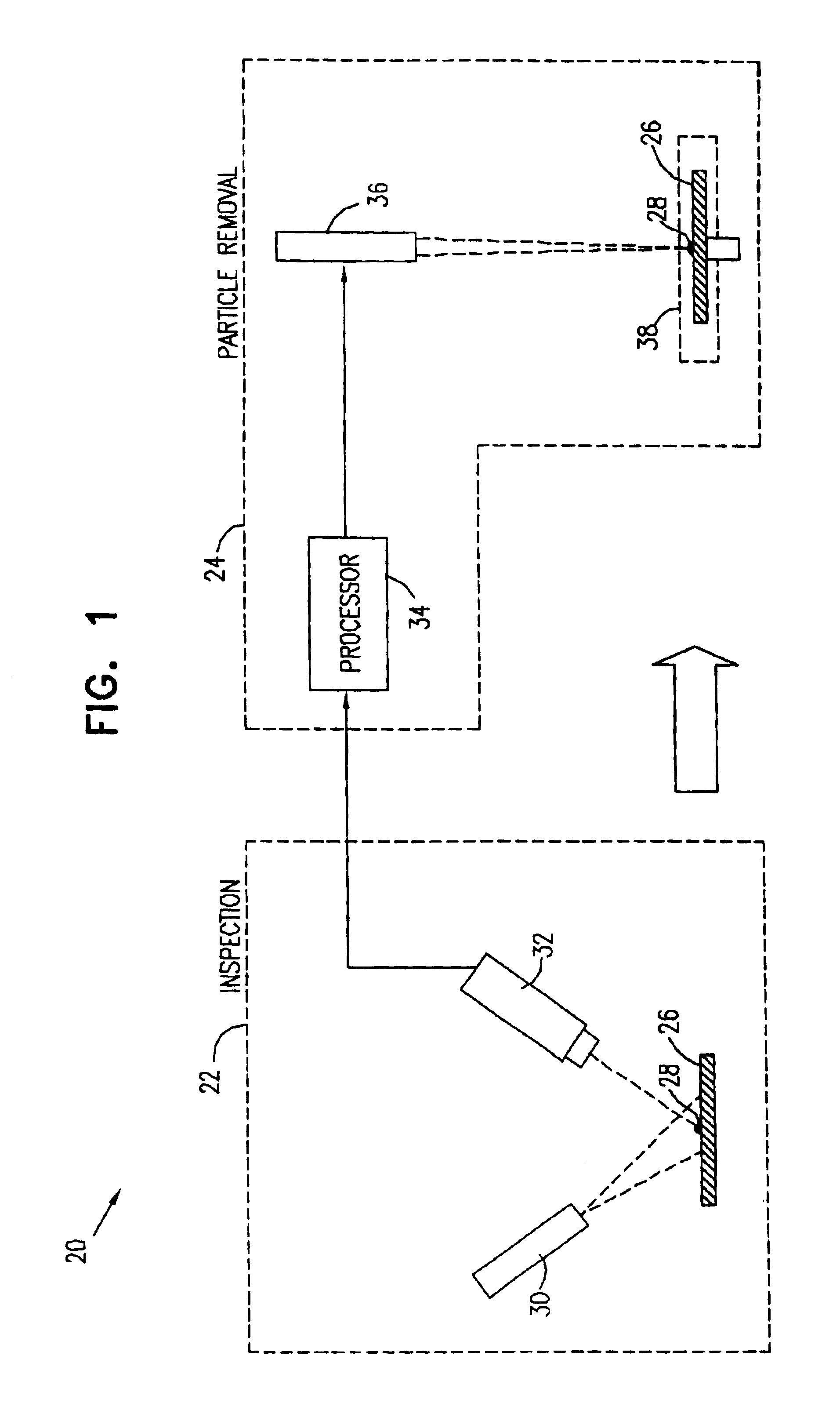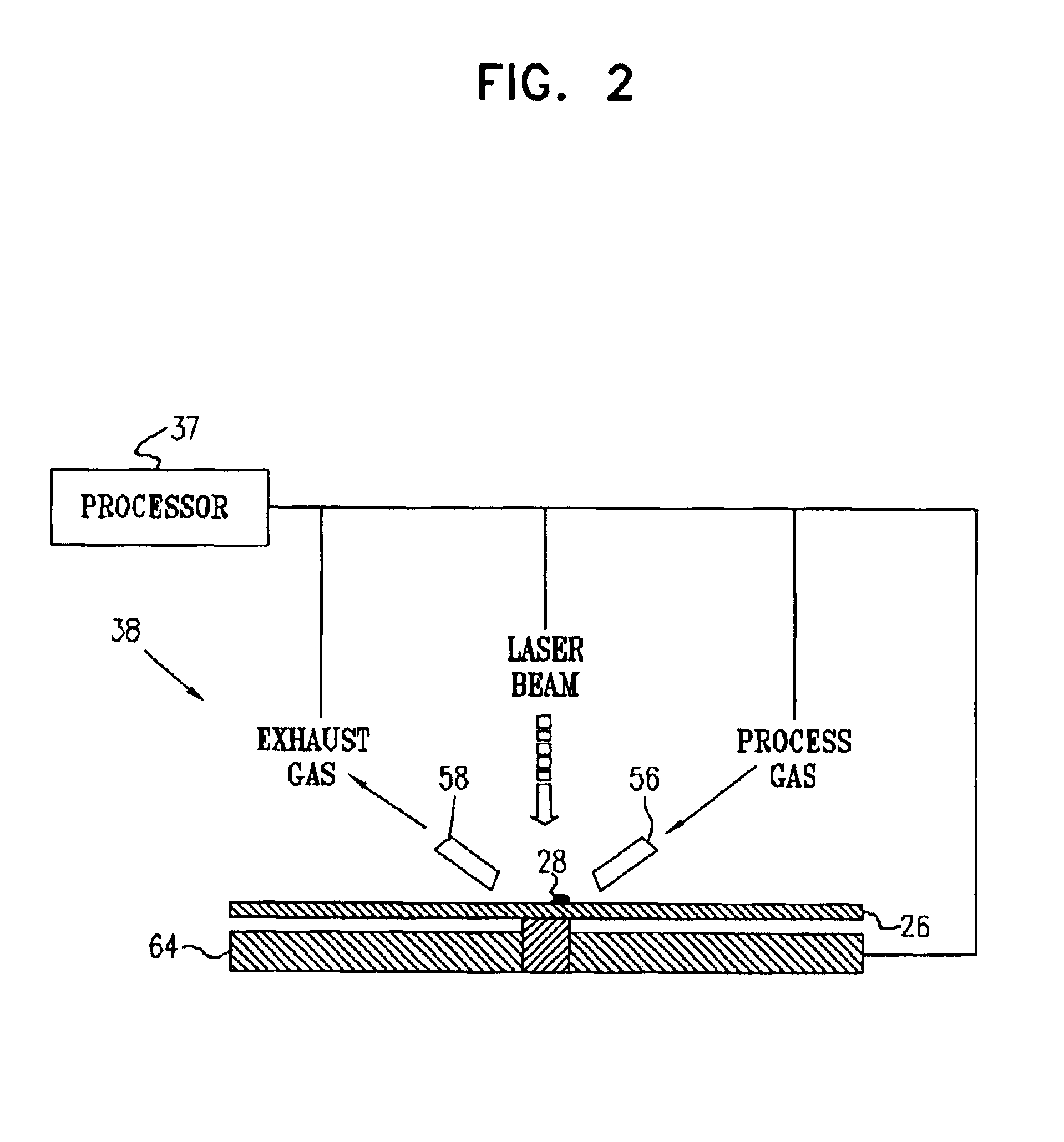Advanced mask cleaning and handling
a mask and advanced technology, applied in the field of advanced mask cleaning and handling, can solve the problem of prolonging the useful life of the mask, and achieve the effect of prolonging the mask li
- Summary
- Abstract
- Description
- Claims
- Application Information
AI Technical Summary
Benefits of technology
Problems solved by technology
Method used
Image
Examples
Embodiment Construction
FIG. 1 is a schematic illustration of a system 20 for removal of particles from the surface of a lithographic mask 26, in accordance with an embodiment of the present invention. System 20 is similar in certain aspects to cleaning systems described in U.S. patent application Ser. No. 09 / 869,058 and in PCT patent application PCT / IL99 / 00701, which are assigned to the assignee of the present patent application and are incorporated herein by reference.
System 20 comprises two stations: an inspection station 22 and a particle removal station 24. Typically, stations 22 and 24 are separate entities, as shown in the figure. Inspection station 22 determines the coordinates of contaminant particles 28 on the surface of the mask. The coordinates are passed to a processor 34, which stores the coordinates and transforms them to a coordinate frame of particle removal station 24. Processor 34 has additional functions, as further described with reference to FIG. 2, below. Mask 26 is then transferred ...
PUM
| Property | Measurement | Unit |
|---|---|---|
| wavelength | aaaaa | aaaaa |
| wavelengths | aaaaa | aaaaa |
| size | aaaaa | aaaaa |
Abstract
Description
Claims
Application Information
 Login to View More
Login to View More - R&D
- Intellectual Property
- Life Sciences
- Materials
- Tech Scout
- Unparalleled Data Quality
- Higher Quality Content
- 60% Fewer Hallucinations
Browse by: Latest US Patents, China's latest patents, Technical Efficacy Thesaurus, Application Domain, Technology Topic, Popular Technical Reports.
© 2025 PatSnap. All rights reserved.Legal|Privacy policy|Modern Slavery Act Transparency Statement|Sitemap|About US| Contact US: help@patsnap.com



